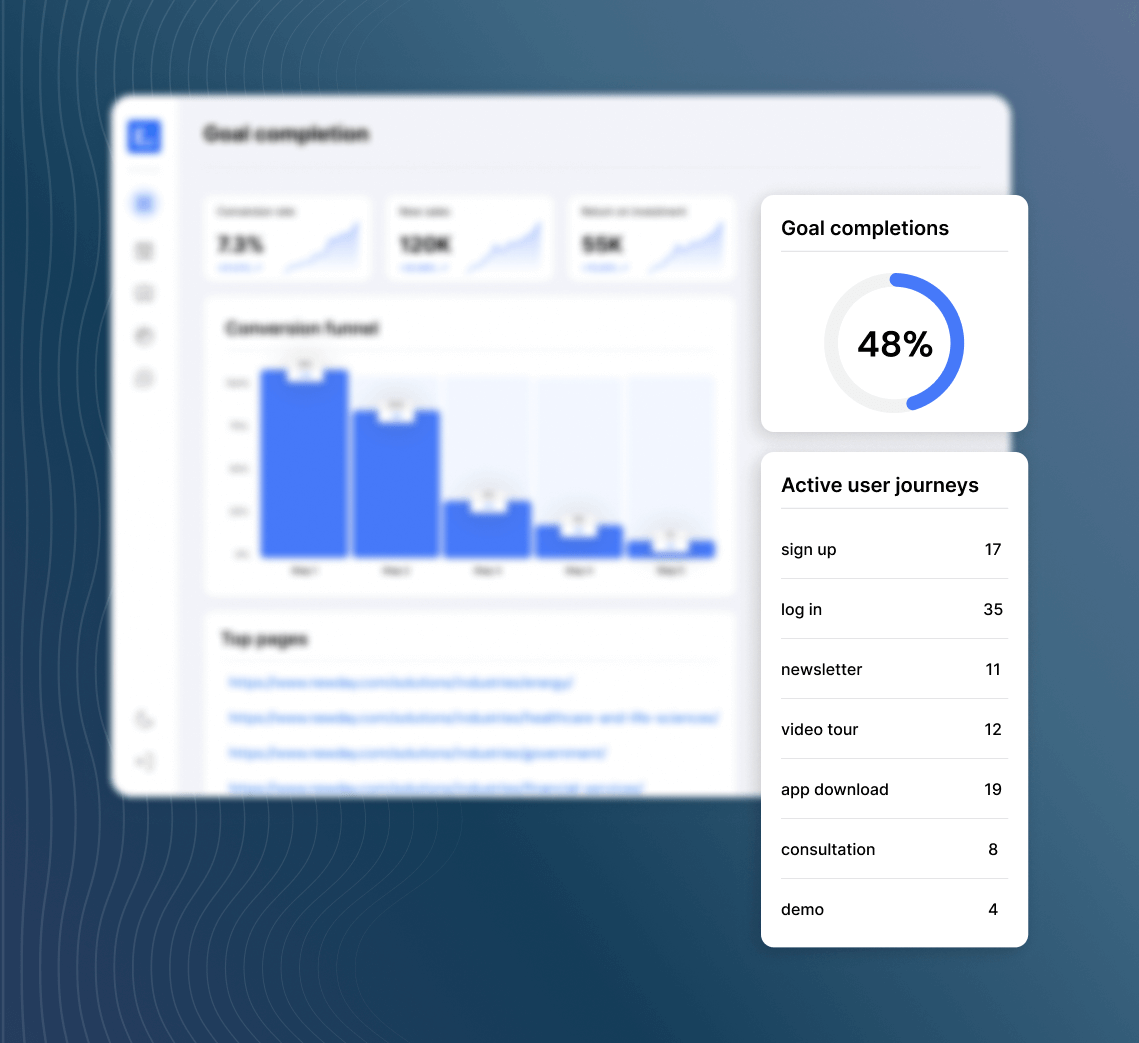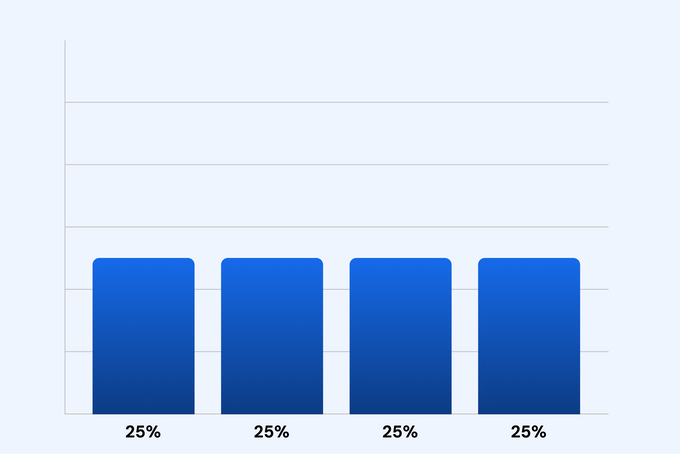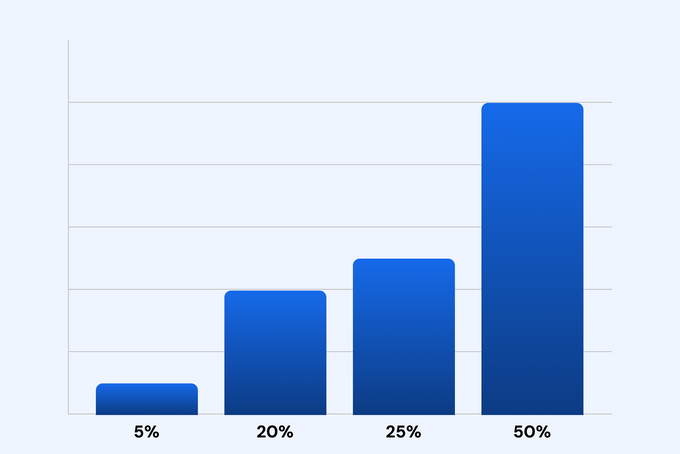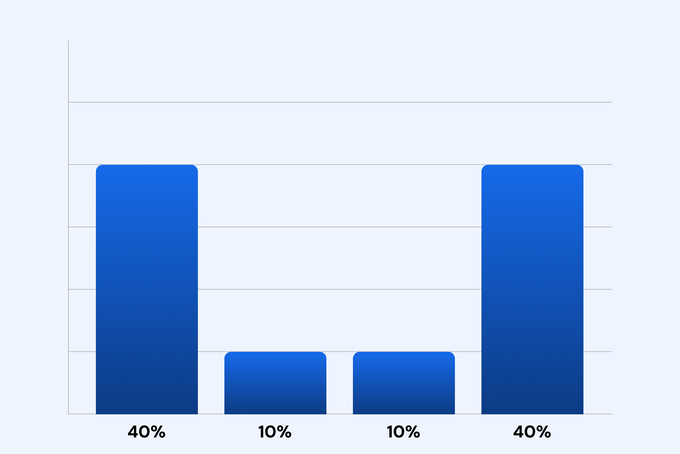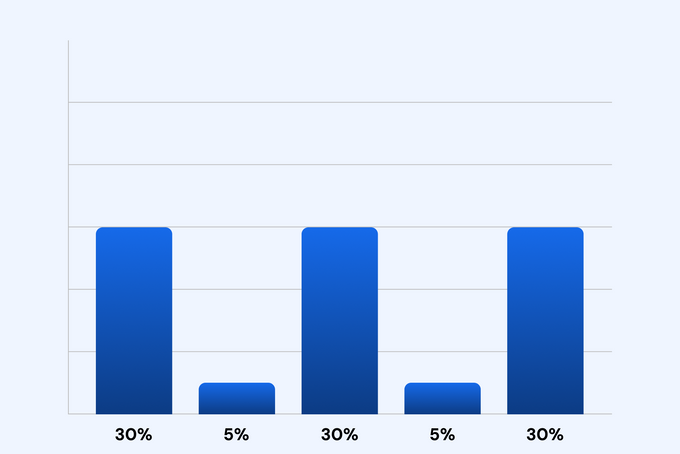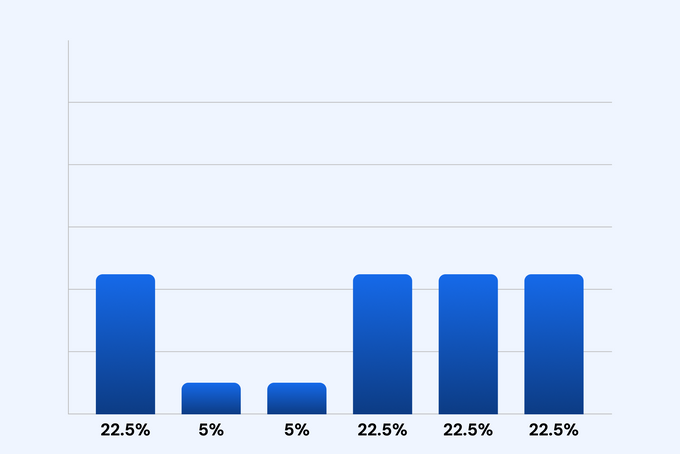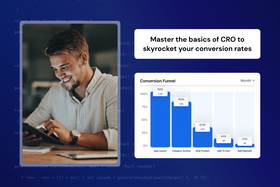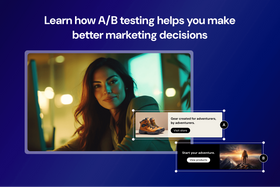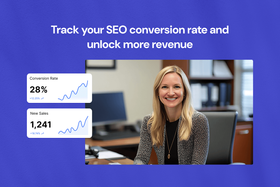Multi-touch attribution: A guide to optimizing user journeys for conversion
Find out how multi-touch attribution can help you track and optimize every step of the user journey for better ROI.
Updated March 24, 2025
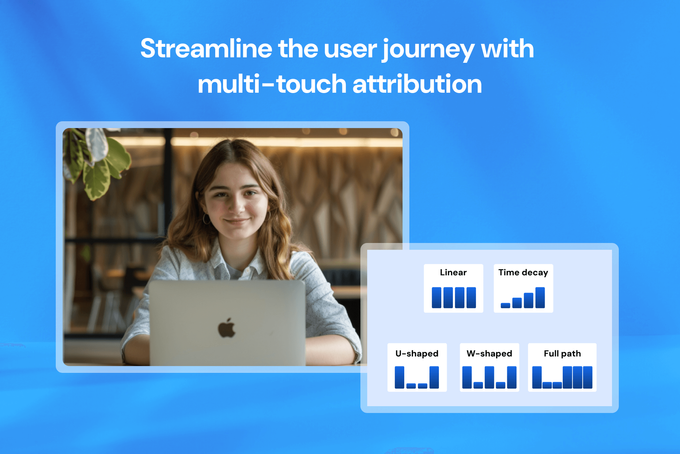
The modern user journey is extremely complex. It lasts much longer and often spans multiple channels and touchpoints. Understanding which touchpoints drive conversions is essential to optimizing your marketing strategies, allocating resources effectively, and improving ROI. Multi-touch attribution models can help you understand the true value of each touchpoint, making it easier to track, analyze, and refine every step of the user journey.
Key takeaways
- To optimize for conversions across multi-touch user journeys, you must be able to assign value to each touchpoint.
- There are six multi-touch attribution models, each distributing credit differently across every touchpoint in the user journey.
- Multi-touch attribution models are often complex.
- You need to find the right multi-touch attribution model for your website.
What is multi-touch attribution?
Multi-touch attribution is a marketing technique used to measure the contribution of multiple channels and touchpoints to a conversion. With a multi-touch attribution model, credit is distributed proportionally among the touchpoints in the user journey based on their perceived contribution to the conversion process.
» Learn about attribution windows and how they impact conversions.
Let's look at an example.
Adam is in the market for a new cellphone. He sees an ad on YouTube for an iPhone. Interested, he visits Apple's website to learn more about the product and signs up for their email newsletter. A little while later, he receives a newsletter via email about the new colorways for the latest iPhone and decides to buy it.
The YouTube ad, website, email sign-up, and newsletter are all important touchpoints in Adam's journey. With multi-touch attribution, Apple's marketing team can attribute the conversion to each touchpoint based on its perceived contribution.
Multi-touch vs. single-touch attribution
The main difference between multi-touch and single-touch attribution is that single-touch attribution models attribute each conversion to only one channel or touchpoint in the user journey.
Single-touch attribution models include:
- First-touch attribution: The first touchpoint the user interacts with gets all the credit for a conversion.
- Last-touch attribution: The final touchpoint the user interacts with gets all the credit for a conversion.
Multi-touch attribution generally provides a more comprehensive view of the user journey than single-touch models, especially in SEO.
In SEO, intent is 90% of conversion, and the best way to know intent is through a user's first-touch interaction. It shows you what the user searched for and teaches you a lot about what type of intent you can convert.
But because most SEO traffic comes from upper-funnel informational searches, users typically need to interact with multiple touchpoints after the first touch to convert. So, you must use an attribution model that solves multi-touch user journeys.
» Solve multi-touch user journeys with Entail CRO.
Benefits of multi-touch attribution
The main benefit of multi-touch attribution is its ability to help marketing teams optimize effectively. If you know a channel performs well, you'll probably want to invest more. However, users usually interact with multiple touchpoints on their path to conversion, so you need to optimize each one. Without a multi-touch attribution model that tells you which pages the user went through and what items they clicked, tracking each touchpoint and determining where to focus your efforts is almost impossible.
Multi-touch attribution models provide granular insights into the effectiveness of each touchpoint across the entire user journey. It also shows you where to spend your marketing dollars, which leads to better ROI.
» Optimize multi-touch user journeys with the best SEO ROI tool.
Challenges of multi-touch attribution
The challenge with multi-touch attribution is its complexity. If a user enters through a single channel and buys immediately, tracking and optimizing their journey is fairly simple.
But when the journey involves multiple touchpoints, it becomes harder to identify where they came from and what to optimize. It's difficult to accurately measure, assign value to each touchpoint, and optimize based on these insights.
When to use multi-touch attribution
Multi-touch attribution is best for businesses with complex user journeys and longer sales cycles. It's also ideal for mature sites running campaigns across multiple channels, where customers may encounter your brand through various sources—like ads, social posts, and articles. This approach allows you to accurately track and optimize or A/B test the impact of each interaction across your organic, social, and paid efforts.
» Not sure if multi-touch attribution is right for your business? Chat with an expert.
Types of multi-touch attribution models
In general, there are six different multi-touch attribution models. Each assigns a certain amount of credit to various touchpoints in the user journey and provides different insights.
Linear multi-touch attribution model
The linear multi-touch attribution model gives equal credit to each touchpoint a user interacts with before converting.
To use our earlier example, the YouTube ad, website, email sign-up, and newsletter would each receive 25% of the credit for Adam's purchase.
Because it considers every touchpoint in the user journey, the linear model is better than a single-touch attribution model. It's also less complex than other multi-touch attribution models and paints a general picture of the user journey. However, it doesn't tell you which touchpoints are more effective, making it difficult to know where to double down or scale back.
» Learn about the stages of the user journey.
Time decay multi-touch attribution model
With the time-decay attribution model, the closer the touchpoint is to the conversion, the more credit it gets. This is based on the assumption that the touchpoints a user interacts with right before converting are more likely to have a direct impact on the purchase decision.
In our iPhone example, Adam converts after being exposed to a YouTube ad, website, email sign-up, and newsletter—in that order. As the first touchpoint, the YouTube ad gets 5% of the credit. Apple's website gets 20%, the email sign-up gets 25%, and the newsletter gets 50%.
With this model, touchpoints at the bottom of the funnel get more credit for a conversion. It may be useful if you want to prioritize touchpoints that are more likely to drive conversions. However, you also need to know what brought the user to your site in the first place. This can help you understand their intent and determine which channel works best so that you know where to invest.
» Discover how to create content that converts.
U-shaped multi-touch attribution model
The U-shaped multi-touch attribution model focuses on the first and last touchpoints in the user journey. They receive 40% credit each, with the final 20% divided equally between the remaining touchpoints.
For example, Adam converted after being exposed to a YouTube ad, Apple's website, email sign-up, and newsletter. With the U-shaped multi-touch attribution model, the YouTube ad and newsletter would each get 40% credit, while Apple's website and the email sign-up would get 10% each.
This model focuses primarily on the top and bottom of the marketing funnel, which I agree are the most important touchpoints. The first touch gives you information about the user—what kind of user they are, their intent, and what brought them to your site. The last touch tells you how you converted them. Of course, you need to look at every situation specifically, but I'd say this is generally the case.
W-shaped multi-touch attribution model
The W-shaped multi-touch attribution model highlights the first touch, lead creation, and last touch in the user journey. Each of these touchpoints gets 30% credit, and the remaining 10% is evenly distributed among the other touchpoints.
So, in Adam's case, the YouTube ad, email sign-up, and newsletter get most of the credit for the conversion.
This model works well for businesses running campaigns across many channels where users interact with various touchpoints. However, it can be difficult to use if the middle of the user journey is hard to pinpoint.
» Want to optimize user journeys across your site? Book a consultation.
Full path multi-touch attribution model
The full path multi-touch attribution model focuses on four touchpoints: first touch, lead creation, opportunity creation, and last touch. Each of these touchpoints gets 22.5% credit, and the last 10% is split between the remaining touchpoints.
This model is best used by businesses with more complex user journeys, such as B2Bs or in cases where a purchase requires considerable consideration.
So, let's switch our iPhone example to something a bit more complicated to illustrate this:
- First touch: A marketing VP looking for a CRM sees a LinkedIn post from someone explaining how helpful Salesforce's CRM is.
- Lead creation: They visit Salesforce's website and sign up for a free trial.
- Opportunity creation: After signing up, they explore the platform but decide to schedule a consultation with a sales rep to understand its features better.
- Last touch: After the consultation, they decide to move forward with a paid plan.
In this example, the LinkedIn post, website, trial sign-up, and consultation would each get 22.5% credit.
While the full path multi-touch attribution model provides in-depth insights into the user journey, it's highly technical and more complex than other models.
» Learn to maximize conversions with user journey optimization.
Custom multi-touch attribution model
A custom multi-touch attribution model is designed to meet a company's unique needs and goals. It could be a combination of two or more existing multi-touch attribution models or built from scratch. Either way, it lets you decide which touchpoints are most important and how much credit to assign each.
However, developing your own multi-touch attribution model isn't easy. It takes time and experimentation to determine what works best for your business. So, keep that in mind if you decide to use a custom model.
» Talk to an expert about how you should build a custom multi-touch attribution model for your business.
How to leverage multi-touch attribution
Regardless of which one you choose, multi-touch attribution models are complex and can be a challenge to set up. You need a tool that simplifies the entire process.
Entail CRO solves multi-touch attribution across content pages where users usually enter through organic or paid channels and interact with multiple articles. Entail's model helps you understand the contribution of each touchpoint across the user journey so you can determine what to invest in.
With these insights, you can make data-driven optimizations to refine your approach and ensure each touchpoint moves users closer to conversion and maximizes ROI.
Optimize touchpoints that matter
Multi-touch attribution provides a clear understanding of complex, fragmented user journeys by showing you exactly how each channel and touchpoint impacts conversions. Using these insights, you can fine-tune every step of your marketing strategy and optimize key touchpoints. This way, your efforts are driven by real data, helping you maximize results across the board.
» Book a demo to see Entail CRO in action, or try it for free.
